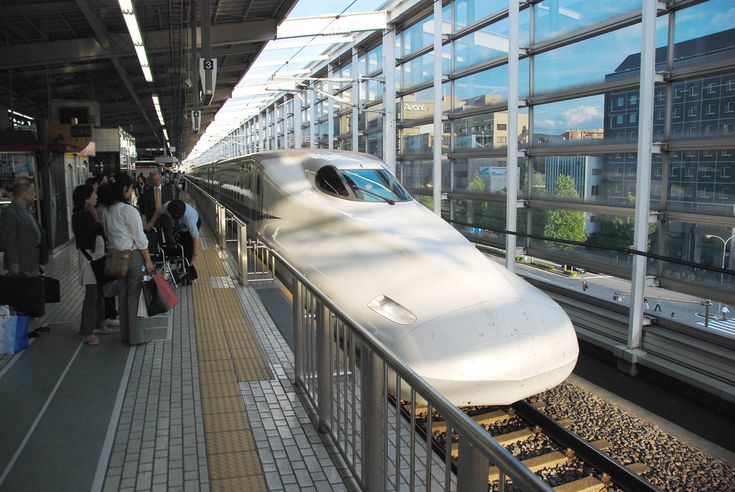Japan, a mesmerizing blend of ancient traditions and futuristic innovation, continues to be one of the world’s most captivating travel destinations. As international travel roars back to life, the Land of the Rising Sun is preparing for a landmark year in 2025, hosting the highly anticipated World Expo in Osaka. However, the travel landscape is in constant flux. The systems and rules that were in place even a year or two ago have undergone significant updates.
For anyone planning a short-term visit in 2025, being prepared is no longer just a recommendation—it’s essential for a smooth, stress-free, and enjoyable journey. From digital entry procedures and major changes to its famous tax-free shopping system to the reintroduction of iconic travel cards, Japan is streamlining, modernizing, and adapting.
This definitive guide provides the most up-to-date information for 2025, covering ten crucial updates every short-term visitor needs to know. Understanding these changes will not only save you time and potential headaches at the airport but will also help you budget more effectively and navigate the country with the confidence of a seasoned traveler. Let’s explore the new rules of the road for your 2025 Japanese adventure.
1. “Visit Japan Web” is Now Essential (Not Just Recommended)
The days of filling out paper disembarkation and customs forms on the plane are officially becoming a thing of the past. Since 2024, the Japanese government has made the use of the Visit Japan Web system mandatory for all short-term visitors to streamline and digitize the entry process.
What’s New?
While previously an optional convenience, all foreign visitors are now strongly encouraged (and practically required) to register their information on the Visit Japan Web platform before their departure. This online service consolidates immigration, customs, and quarantine procedures into a single, user-friendly portal.
The Details:
Before you leave your home country, you’ll need to create an account and input key details, including your passport information, flight details, and customs declaration. The system will then generate two unique QR codes: one for immigration and one for customs. This pre-registration is designed to significantly speed up your arrival process. Many major Japanese airports, including Narita, Haneda, and Kansai, are equipped with automated facial recognition gates. If your passport has an IC chip, your pre-registered information allows you to use these gates, bypassing the long lines often associated with manual checks by immigration officers.
Your Action Plan:
-
Register in Advance: Complete your registration on Visit Japan Web at least 24 hours before your flight to avoid any last-minute stress.
-
Pro-Tip: Screenshot Your QR Codes! While airports offer Wi-Fi, connectivity can be unreliable, especially when hundreds of people are trying to connect at once. After generating your QR codes, take a screenshot of each one and save them to your phone’s photo gallery. This ensures you can access them instantly without needing an internet connection.
2. The New Tax-Free Shopping System: A Major Overhaul
Japan’s tax-free shopping has long been a major perk for international tourists. However, to combat fraudulent use and modernize the system, the government is implementing significant reforms starting in 2025, with a full transition planned for 2026.
What’s New?
The current system, where you show your passport at the point of sale to receive an immediate discount, is being phased out. It’s being replaced by a refund-based system, similar to those in many European countries.
The Details:
The change will happen in two phases:
-
As of April 2025: The practice of purchasing tax-free items and having them shipped directly overseas will no longer be eligible for tax exemption. This closes a loophole that was sometimes exploited.
-
Starting in November 2026 (projected): The full refund-based system will be implemented. Under this new model, visitors will pay the full price, including the 10% consumption tax, at the time of purchase. You will then need to claim a tax refund at designated counters at the airport upon your departure by presenting your receipts and purchased goods.
Furthermore, the requirement for items to be sealed in special tax-free packaging is being eliminated. However, a new rule will require all tax-free items to be taken out of Japan within 30 days of purchase.
Your Action Plan:
-
Budget Accordingly: After the new system is in place, you will need to have enough funds (cash or credit) to cover the full taxed price of your purchases upfront.
-
Allow Time at the Airport: The refund process will require an extra step at the airport before you leave. Be sure to arrive with ample time to locate the refund counters and process your claim.
-
Keep Your Receipts: Meticulously save all receipts for tax-free purchases, as they will be essential for claiming your refund.
3. Physical Suica and PASMO Cards Are Back!

For years, Suica and PASMO IC cards have been the gold standard for effortless travel in Japan. Due to a global semiconductor shortage, the sale of these physical, non-personalized cards was suspended in 2023, causing inconvenience for many travelers.
What’s New?
Great news for 2025 visitors! The sale of non-personalized Suica and PASMO cards is set to resume in March 2025.
The Details:
These rechargeable smart cards are indispensable. They can be used for more than just transit; they are accepted at convenience stores, vending machines, station lockers, and even some restaurants. The non-personalized versions are ideal for short-term visitors as they don’t require any ID or registration. You simply purchase a card from a ticket machine at a major airport or train station, pay a 500 yen refundable deposit, and load it with cash.
Your Action Plan:
-
Get One on Arrival: Make purchasing a Suica or PASMO card one of your first tasks upon arriving at the airport. It will make your travel infinitely smoother.
-
Return for a Refund: Before you leave Japan, you can return your card at a ticket office to get your 500 yen deposit back, along with any remaining balance (a small handling fee may apply).
-
Consider Mobile Options: If you have a compatible smartphone (most modern iPhones and some Androids), you can also add a digital Suica or PASMO card to your mobile wallet, which can be recharged via your credit card.
4. Eased Visa Rules Mean More Crowds (Especially from China)
In a strategic move to boost tourism, Japan has been relaxing its visa requirements for visitors from several countries.
What’s New?
In 2024, Japan began issuing 10-year multiple-entry visas to Chinese tourists, allowing stays of up to 90 days per visit. This policy has already led to a significant increase in the number of inbound tourists from China.
The Details:
This visa relaxation is part of Japan’s broader goal to attract 60 million foreign visitors annually by 2030. While fantastic for the local economy, it has a direct impact on the travel experience. Popular destinations like Tokyo, Kyoto, and Osaka, as well as major attractions, are experiencing higher levels of crowding, particularly during peak seasons.
Your Action Plan:
-
Book Early: Accommodations and popular train routes will fill up faster than ever. It is crucial to make hotel and transportation reservations as far in advance as possible.
-
Explore Off the Beaten Path: To escape the crowds, consider adding lesser-known destinations to your itinerary. Regions like Tohoku, Shikoku, and the San’in coast offer incredible beauty and a more authentic, less crowded experience.
-
Travel During Off-Peak Times: If your schedule is flexible, traveling outside of major holiday periods will result in a more relaxed and affordable trip (see point #8).
5. A Potential Hike in the “Sayonara Tax” (Departure Tax)

Since 2019, Japan has imposed a 1,000 yen (approximately $7 USD) departure tax, officially known as the “International Tourist Tax,” on all travelers leaving the country.
What’s New?
Discussions are underway to potentially increase this tax to as much as 5,000 yen (approximately $35 USD), with a possible implementation in 2025.
The Details:
This tax is automatically included in the price of your airline or cruise ticket. The revenue is used to fund improvements to Japan’s tourism infrastructure, such as multilingual signage, airport Wi-Fi upgrades, and the promotion of tourism in rural areas. The proposed increase reflects the growing need to manage the impacts of “overtourism” and further enhance the visitor experience across the country. While the proposal is not yet finalized, it has sparked mixed reactions.
Your Action Plan:
-
Factor it into Your Budget: While the tax is included in your ticket price, be aware of this potential cost increase when budgeting for your flights. A family of four could see their ticket costs rise by over $100.
-
Stay Informed: Keep an eye on travel news as your departure date approaches to see if this change has been officially implemented.
6. The Game-Changing Preclearance Pilot Program
To further improve traveler convenience and reduce airport congestion, Japan is innovating beyond its borders.
What’s New?
Japan has launched a pilot program for preclearance procedures, allowing travelers to complete Japanese immigration checks at their departure airport before boarding their flight.
The Details:
The pilot program began in 2025 at Taiwan Taoyuan International Airport. Travelers departing from this airport can stop by a Japanese immigration booth to have their documents, fingerprints, and photo verified. Once cleared, a confirmation mark is added to their boarding pass. Upon arrival in Japan, these travelers can use a special, expedited lane, effectively skipping the regular immigration process entirely. This is especially advantageous during peak travel periods.
Your Action Plan:
-
Check for Expansion: If successful, this system is expected to expand to other major airports in the region, with South Korea, Hong Kong, and Singapore being likely candidates. Before you travel, check with your airline or departure airport to see if preclearance is available for your flight.
-
Arrive Early at Your Departure Airport: If you plan to use the preclearance service, you will need to allocate extra time at your departure airport to complete the process before your flight.
7. Stricter Baggage Inspections and Import Rules
In recent years, Japan’s customs authorities have significantly strengthened baggage inspection procedures and tightened import restrictions to prevent illegal imports and safeguard public safety.
What’s New?
Advanced X-ray scanners are now installed at major Japanese airports to detect prohibited items more effectively. Customs officers are also conducting more frequent manual inspections, especially if suspicious items are detected.
The Details:
Travelers must be fully aware of prohibited and restricted items. This includes, but is not limited to:
-
Fresh Produce: Most fruits and vegetables are prohibited to prevent the introduction of pests.
-
Meat Products: All meat products (including jerky, sausages, and ham) are strictly forbidden unless they have a valid inspection certificate from the Japanese government.
-
Counterfeit Goods: Bringing in fake luxury goods or pirated media is illegal.
-
Certain Medications: Some common over-the-counter medications in other countries (like certain cold medicines containing pseudoephedrine) are restricted under Japanese law.
Your Action Plan:
-
Check Before You Pack: Before your trip, visit the official Japan Customs website for the latest, most detailed list of restricted goods.
-
Declare Everything: If you are unsure about an item, always declare it on your customs form and consult an officer. Failure to declare, even unintentionally, can result in hefty fines, confiscation, or even denial of entry.
-
Be Cautious with Gifts: Be careful when carrying items for others. You are legally responsible for all contents in your possession.
8. Know Your Peak Travel Seasons for 2025
Understanding Japan’s holiday schedule is key to planning a successful trip. The country has several peak travel seasons where demand for transportation and accommodation surges, and prices rise significantly.
What’s New?
With inbound tourism at an all-time high, these periods are busier than ever. Knowing the 2025 dates is crucial.
The Details:
The two most notable peak periods are:
-
Golden Week (2025): This series of public holidays will run from Saturday, April 26th to Tuesday, May 6th. This extended holiday prompts mass domestic travel.
-
New Year Holidays: The busiest travel days are typically from December 29th to January 3rd. Many Japanese people return to their hometowns or visit shrines.
Your Action Plan:
-
Avoid If Possible: If you prefer fewer crowds and lower prices, it’s best to avoid traveling during these specific weeks.
-
Book Months in Advance: If you must travel during a peak period, book flights, trains (especially Shinkansen), and hotels at least 3-6 months in advance.
-
Consider Off-Peak Seasons: The quieter periods of mid-May, September, and early December offer a more relaxed travel experience with more affordable rates and pleasant weather.
9. Mastering the Language Barrier with Modern Tools
While many Japanese people are incredibly helpful, the language barrier can still be a concern for travelers, especially in more rural areas.
What’s New?
Translation apps have become incredibly powerful and are an essential tool for any visitor. AI-powered apps are now capable of combining translation, mapping, and even restaurant recommendations into a single, seamless experience.
The Details:
Two of the most popular and reliable free options are VoiceTra and Google Translate.
-
VoiceTra: Developed by Japan’s National Institute of Information and Communications Technology, this app excels at voice translation for conversations. A key feature is its offline functionality, which is invaluable in areas with poor internet.
-
Google Translate: This app’s standout feature is its real-time camera translation. Simply point your phone’s camera at a menu, sign, or product label, and the app will overlay the English translation. It also includes a conversation mode.
Your Action Plan:
-
Download Before You Go: Download your chosen app and, crucially, download the Japanese language pack for offline use ahead of time.
-
Carry a Portable Charger: These apps can drain your phone’s battery quickly. A portable power bank is a lifesaver.
-
Learn a Few Phrases: While apps are great, learning simple phrases like “Sumimasen” (Excuse me / I’m sorry), “Arigatou” (Thank you), and “Eigo o hanasemasu ka?” (Can you speak English?) goes a long way in showing respect and making interactions smoother.
10. Emergency Preparedness: Know Your Numbers

Japan is one of the safest countries in the world, but it’s always important to be prepared for emergencies.
What’s New?
With the increase in international visitors, Japan has made efforts to ensure its emergency services are accessible.
The Details:
Japan’s emergency numbers are simple and easy to remember. Both can be dialed for free from mobile phones or public telephones.
-
Dial 110: For police assistance.
-
Dial 119: For fire or ambulance services.
In major urban areas, operators can often provide assistance in English. At major airports, train stations, and tourist information centers, you can find staff who can assist in English.
Your Action Plan:
-
Save Embassy/Consulate Information: Save the contact information and address of your country’s embassy or consulate in your phone and have a physical copy just in case.
-
Check Hotel Protocols: Ask your hotel about their emergency protocols upon check-in. Many hotels provide guests with emergency contact cards.
-
Have Travel Insurance: Ensure you have comprehensive travel insurance that covers medical emergencies.
Conclusion: An Informed Traveler is a Happy Traveler
Traveling to Japan in 2025 promises to be more exciting than ever. By staying informed about these essential updates, you can navigate the new procedures with ease, avoid common pitfalls, and focus on what truly matters: immersing yourself in the unparalleled culture, cuisine, and beauty of this incredible country.
Preparation is the key to transforming potential travel stress into pure adventure. From pre-registering on Visit Japan Web to understanding the new tax-free rules and packing your bags with customs regulations in mind, these steps will ensure your journey is as smooth and memorable as possible.

